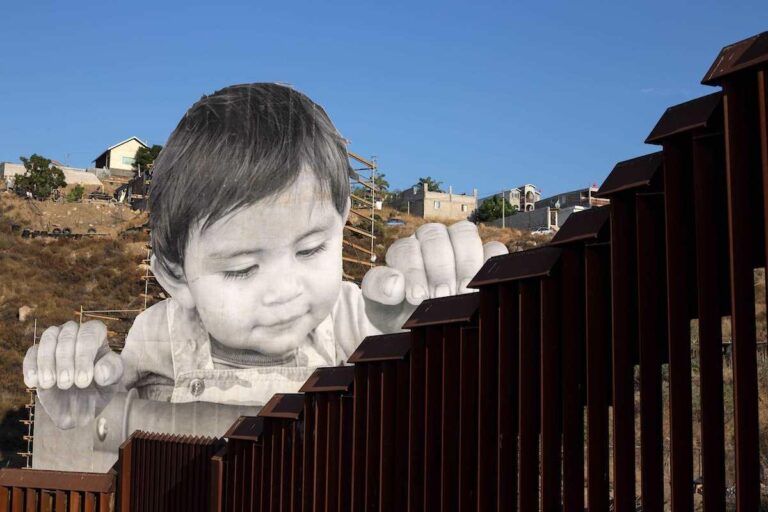At the heart of the Venice Biennale, one of the world’s most prestigious art exhibitions, a provocative new vision of the U.S.-Mexico border is taking shape. The project, titled MEXUS, reimagines the traditionally fraught and divided frontier as a vibrant, interconnected binational region. Through a multidisciplinary collaboration of artists, architects, and urban planners, MEXUS challenges prevailing narratives of separation by proposing innovative cultural, social, and spatial integrations that reflect the realities and aspirations of border communities. This unprecedented initiative not only spotlights the dynamic identities blossoming along the border but also sparks a broader conversation about the possibilities of coexistence and cooperation in one of the world’s most contested geopolitical zones.
Exploring the Concept of MEXUS as a Binational Region Redefining Borders
MEXUS emerges as a provocative vision that challenges the traditional notion of political and cultural borders between the United States and Mexico. Presented at the Venice Biennale, this binational initiative reimagines the border not as a barrier, but as a dynamic space of shared identity, economic exchange, and collaborative future-building. In doing so, MEXUS highlights the power of art and urban design to reshape narratives, fostering connectivity across fractured histories and promoting inclusive regional growth.
The concept is anchored on several transformative ideas:
- Cross-border innovation: Creating joint economic zones that allow for freer movement of goods, services, and people.
- Cultural exchange: Elevating artistic collaborations that celebrate hybrid identities and challenge stereotypes.
- Sustainable urban planning: Developing eco-friendly infrastructure integrating resources and expertise from both sides.
This holistic approach illustrates how redefined borders can be a catalyst for progress rather than conflict, inviting policymakers and citizens alike to envision a future where binationalism equips local communities to thrive in an interconnected world.
| MEXUS Pillar | Key Element | Potential Impact |
|---|---|---|
| Economic | Joint Tech Hubs | Boosts innovation and job creation |
| Social | Cultural Festivals | Strengthens community identity |
| Environmental | Shared Resource Management | Promotes sustainability and resilience |
Artistic Interpretations at the Venice Biennale Spotlight Cross-Border Collaboration
At this year’s Venice Biennale, a captivating artistic initiative redefines territorial boundaries through a collaborative vision coined MEXUS. This imaginative project transcends traditional geopolitical barriers, weaving together cultural narratives from both sides of the U.S.-Mexico border. Participating artists explore themes of identity, migration, and shared histories by merging indigenous and contemporary aesthetics, inviting viewers to rethink what national borders represent in a globalized artistic context.
The exhibition features a diverse range of media, including installations, mixed-media sculptures, and interactive digital displays, emphasizing how art can forge connections across divides. Noteworthy elements include:
- Collaborative murals reflecting binational stories
- Multilingual poetry recitals highlighting linguistic hybridity
- Soundscapes evoking borderland environments
By spotlighting these works, the Biennale envisions a future where cultural collaboration urges new dialogues about coexistence and shared spaces, challenging viewers to engage beyond conventional political frameworks.
Challenges and Opportunities in Creating a Shared U.S.-Mexico Identity
Bridging two distinct national identities involves navigating a complex set of historical, cultural, and political factors that have shaped perceptions on both sides of the border. The envisioned MEXUS region challenges long-standing narratives by proposing a shared culture that embraces bilingualism, bi-national collaboration, and hybrid traditions. However, resistance to this concept remains rooted in economic disparities, immigration policies, and deep-seated notions of sovereignty, which continue to complicate efforts toward integration. Artists and planners at the Venice Biennale highlight that crafting a unified identity is less about erasing differences and more about celebrating coexistence through mutual respect and creative dialogue.
Opportunities to foster this shared identity are emerging through grassroots cultural exchanges and innovative urban planning that reimagine space and community boundaries. These initiatives focus on:
- Educational programs promoting bilingualism and cross-border histories.
- Economic partnerships targeting local industries and ecological sustainability.
- Shared public spaces designed to cultivate communal engagement across national lines.
By leveraging these avenues, MEXUS envisions a future in which collaboration transcends politics, creating a fluid borderland identity that could redefine national belonging in the 21st century.
Policy Recommendations for Fostering Economic and Cultural Integration in MEXUS
To nurture a truly binational region like MEXUS, policymakers must prioritize the dismantling of traditional barriers that inhibit seamless economic collaboration. This involves crafting cross-border trade agreements tailored to small and medium-sized enterprises, enabling them to tap into bi-national markets with reduced tariffs and streamlined customs procedures. Investments in joint innovation hubs and bilingual education programs can cultivate a workforce skilled in both economic and cultural fluencies, strengthening ties across communities and bridging labor market gaps.
Equally critical is the establishment of cultural exchange initiatives that celebrate the region’s shared heritage while fostering mutual understanding. Recommendations include:
- Creating binational arts and cultural festivals sponsored by both governments to increase visibility and participation.
- Implementing bilingual public services and media platforms to ensure accessibility and representation for diverse populations.
- Supporting urban planning projects that encourage public spaces and transportation systems connecting cross-border cities.
| Policy Area | Key Initiative | Expected Impact |
|---|---|---|
| Economic Collaboration | Binational SME Trade Facilitation | Boosted cross-border commerce |
| Education & Workforce | Bilingual Technical Training | Enhanced labor mobility |
| Cultural Integration | Shared Arts Festivals | Stronger communal bonds |
Wrapping Up
As the Venice Biennale showcases visionary projects like MEXUS, the reimagining of the U.S.-Mexico border as a collaborative, binational region sparks important conversations about identity, migration, and shared futures. This innovative concept challenges conventional boundaries and invites policymakers, artists, and communities to rethink division and connection in an increasingly interconnected world. While still a work of artistic imagination, MEXUS underscores the potential for creative approaches to real-world issues‚ÄĒoffering a glimpse of what could be achieved through cooperation and mutual respect along one of the most contested frontiers in the Americas.







